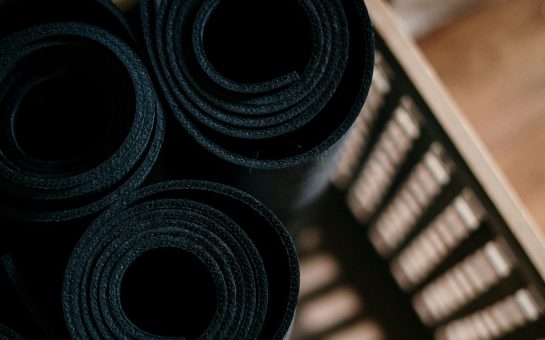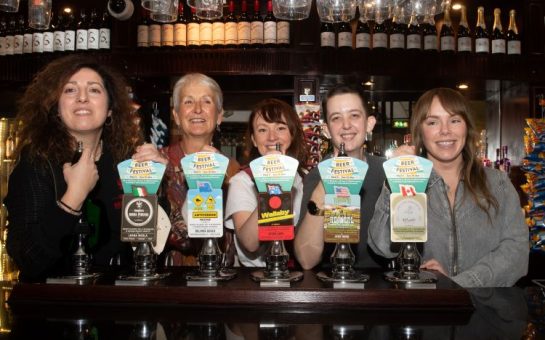Chronic Pain is a condition that has been circulating the media thanks to This Morning’s Eamonn Holmes.
Since being diagnosed with a dislocated pelvis and slipped three discs in his back in March, Eamonn, 63, has detailed his struggles with Chronic Pain on social media and said that he sometimes worries that he isn’t going to get any better.
Chronic Pain is defined by the NHS as persistent pain that lasts for more than 12 weeks despite the intervention of medication or treatment.
It is a condition that affects roughly 43% of adults in the UK, which corresponds to just over 28 million people.
Despite affecting such a high percentage of the population, many people don’t have a proper understanding of the condition and the negative effects it can have on every part of the sufferer’s life.
A recent study conducted by Boston Scientific revealed that during the COVID-19 pandemic, seven in 10 UK chronic pain sufferers delayed seeking medical advice, leaving them feeling increased levels of anxiety, stress and worry.
The delay in getting advice and treatment negatively impacted UK respondents, with 30% saying it increased their level of stress and anxiety.
26% felt worried about the future because of the pain they’re currently experiencing, and 25% of those surveyed couldn’t go about their usual lives because of the pain.
While 23% agreed the media had increased coverage of chronic pain during the pandemic, 63% agreed that compared to before the pandemic, there was more confusion about the difference between chronic and standard pain.
Vicent Sourdaine, Vice President Neuromodulation EMEA at Boston Scientific said: “Chronic pain can massively impact even simple everyday activities.
“Pain is not necessarily visible from the outside, which is why it is so important to us to give a voice to those affected.”
Hannah Paul, 49, has spent the last three years trying to have the source of her pain condition diagnosed.
The pain originally started in her right side, going into her ribs and then her shoulders.
She said: “When the pandemic hit, everything just got worse and worse.
“I had a couple of attacks where I could not breathe and felt like I was having a heart attack, so I was rushed into hospital twice.”
After having her gallbladder removed, to no benefit, Hannah bounced between one surgeon and another before consulting a private rheumatologist at Parkside Hospital in Wimbledon.
She has since been diagnosed with fibromyalgia, chronic fatigue syndrome, SIBO (small intestinal bacterial overgrowth), malabsorption and nerve damage on her left hand side.
She stated: “Some days I’m walking with a walking stick, other days I can do things.
“Yesterday was a nice sunny day and my pain was really low for me on a scale from one – 10, normally I’m on 10 all the time.
“I was about seven yesterday, so I had a nice walk – it was lovely, but this morning I feel dead beat.”
Millie Huxley (not her real name), 25, suffered with painful periods from the age of 15.
She was diagnosed with polycystic ovary syndrome (PCOS) at 17, endometriosis at 21 and has been suffering with chronic pelvic pain for most of this time.
When we spoke she was about to have her second laparoscopic surgery to see whether her endometriosis had returned.
She said: “I’ve been thinking a lot about what I’ve been through the last few years in the lead up to my operation.
“My pain management doctor said that we experience chronic pain because the body, in my case my pelvis, continues to send pain signals to the brain even after the injury or trauma has healed and this can last weeks or years – there is no set time frame.
“And the sense of fear and uncertainty that I associate with my condition is something that I choose not to think about because otherwise it could swallow me whole.”
Millie stated: “I’ve been in some form of pain everyday for as long as I can remember, and I don’t mean that in the sense of being dramatic, but rather my concoction of pain medication is so complicated that I really don’t remember the last time I didn’t wake up in some form of pain.”
Something that I spent a considerable amount of time talking to both Hannah and Millie* about was the use of pain medications in their treatments.
Both Hannah and Millie had been referred to pain management clinics at their respective hospitals and both women had been recommended to use various medications to improve their pain symptoms.
Millie noted: “In the five years that I’ve been seeing my doctor at the pain clinic I’ve tried a variety of different medications for pain relief.
“I’ve been prescribed codeine, morphine and been on various combinations of anti-depressents.”
Antidepressants are used in the treatment of chronic pain because they have been found to increase neurotransmitters in the spinal cord which can reduce pain signals.
Hannah said: “With my chronic pain and fibromyalgia I was prescribed amitriptyline and pregabalin and told to go away and get on with it.
“When I went to see the private specialist, he asked me if the medications were working, when I said no he told me to stop taking them because they weren’t good for me.”
Both women noted side effects such as significant weight gain, mood changes, headaches and nausea.
Dr Anna Mathieson, clinical psychologist at St George’s Hospital said: “There has been a better understanding over recent years that pain medications do have a time limit on them.
“A lot of them are designed for the treatment of acute pain, rather than chronic, and while they’ve got a place, we don’t want that to be the only treatment option that people think is available.”
The final thing that SWL spoke to both women about was how their conditions affected them on a personal level.
Hannah said: “I was the life and soul of the party, if there was a party coming along, you could guarantee that I would be the one that would be trying to do the splits and dance like Tina Turner – my life has really changed.
“I’m limited on the friends that I’ve got because people sometimes get fed up with it, that you’re the person that always blows out at the last minute because you’re in pain.”
Millie reiterated this sentiment saying: “I sometimes feel like I’m two people, myself and the persona I put on for my friends and family.
“I’ve always been a stoic person, I’ve always kept my problems to myself, so it’s taken a long time for people to understand just how ill I can sometimes be, and I have lost friendships and relationships because of it.”
When both women were asked about the one piece of advice they would give to someone suffering from chronic pain, they had very different answers.
Millie said: “I’ve only recently learned how important it is to be my own advocate.
“You need to remember that you live with your pain day in and day out, you know your body better than any doctor will.
“So if you feel like something isn’t right, trust yourself and get it checked out.”
On the other hand, Hannah said: “It’s taken me a really long time to allow myself to say I can’t do something.
“We’re not taught that sometimes it’s okay to be selfish if it’s for our own good and when you suffer with a chronic condition like ours, you need to take care of yourself.”
For more information on living with Chronic Pain, please visit the site through this link.
To find advice about managing Chronic Pain symptoms, please visit the site through this link.




